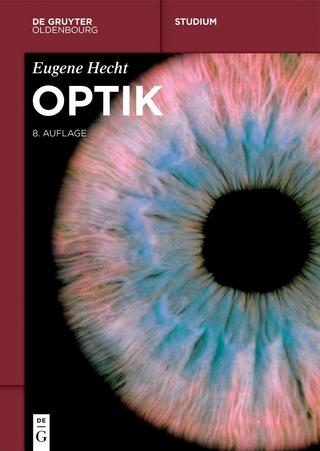
Optical System Design
Academic Press Inc (Verlag)
978-0-12-408660-9 (ISBN)
- Titel ist leider vergriffen;
keine Neuauflage - Artikel merken
Rudolf Kingslake (1903-2003) was a founding faculty member of the Institute of Optics at The University of Rochester (1929) and remained teaching until 1983. Concurrently, in 1937 he became head of the lens design department at Eastman Kodak until his retirement in 1969. Dr. Kingslake published numerous papers, books, and was awarded many patents. He was a Fellow of SPIE and OSA, and an OSA President (1947-48). He was awarded the Progress Medal from SMPTE (1978), the Frederic Ives Medal (1973), and the Gold Medal of SPIE (1980).
Preface1. Optical Systems I. Design and Production II. Optical Materials III. Lens Manufacture2. Light and Images I. The Nature of Light II. The Law of Refraction III. A Perfect Optical System IV. Lens Aberrations V. Fiber Optics3. Ray-Tracing Procedures I. Types of Rays II. Graphical Ray Tracing III. Meridional Ray Tracing IV. Paraxial Rays V. Curved Mirrors VI. Magnification and the Lagrange Theorem VII. The Fresnel Lens4. The Gaussian Theory of Lenses I. Introduction II. The Four Cardinal Points III. Conjugate Distance Relationships IV. A Single Lens V. Longitudinal Magnification VI. The Scheimpflug Condition VII. Focometry VIII. Autofocus Mechanisms5. Multilens Systems I. Graphical Construction of an Image II. Ray Tracing Through a System of Separated Thin Lenses III. Two Thin Lenses with a Real Object and Real Image IV. The Matrix Approach to Paraxial Rays V. Cylindrical Lenses6. Oblique Beams I. Meridional Rays II. The Iris and Pupils of a Lens III. Paraxial Tracing of an Oblique Beam7. The Photometry of Optical Systems I. Introduction II. Photometric Definitions III. Photometric Properties of Plane Surfaces IV. Photometric Measuring Instruments V. The Flux Emitted by a Plane Source VI. Illuminance Due to a Circular Source VII. Illumination in an Optical Image8. Projection Systems I. A Self-Luminous Object II. An Illuminated Object III. Projection Screens IV. Stereoscopic Projection V. Contour Projectors9. Plane Mirrors and Prisms I. Right- and Left-Handed Images II. Rotating Mirrors III. Multiple Mirror Systems IV. Reflecting Prisms V. Image Rotators VI. Prismatic Image Erectors10. The Eye as an Optical Instrument I. Dimensions II. The Properties of Vision III. Spectacle Lenses IV. Stereoscopic Vision11. Magnifying Instruments I. The Simple Magnifier II. The Compound Microscope III. Abbe Theory of Microscope Vision IV. Microscopy of Transparent Objects12. The Telescope I. Fundamental Properties II. Eyepieces III. Erecting Telescopes IV. Other Types of Telescopes V. Astronomical Telescopes13. Surveying Instruments I. Classes of Surveying Instruments II. Rangefinders III. An Axicon14. Mirror Imaging Systems I. Single-Mirror Systems II. Two-Mirror Systems III. Coma Correction IV. Obstruction15. Photographic Optics I. Perspective Effects in Photography II. Focusing on a Near Object III. Depth of Focus and Depth of Field IV. The Theory of Tilted Planes V. Special Purpose Lenses VI. Types of Zoom Lenses VII. Specifying a Photographic Objective VIII. Panoramic or Slit Cameras IX. Motion-Picture Systems16. Spectroscopic Apparatus I. Dispersing Prisms II. Diffraction GratingsIndex
| Verlagsort | San Diego |
|---|---|
| Sprache | englisch |
| Gewicht | 710 g |
| Themenwelt | Naturwissenschaften ► Physik / Astronomie ► Optik |
| ISBN-10 | 0-12-408660-8 / 0124086608 |
| ISBN-13 | 978-0-12-408660-9 / 9780124086609 |
| Zustand | Neuware |
| Haben Sie eine Frage zum Produkt? |
aus dem Bereich


